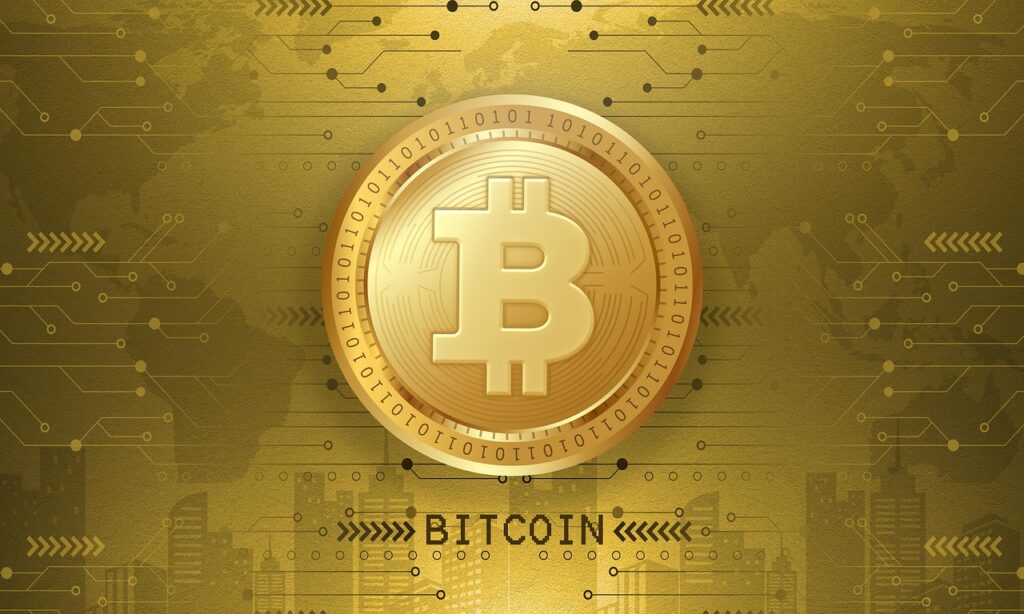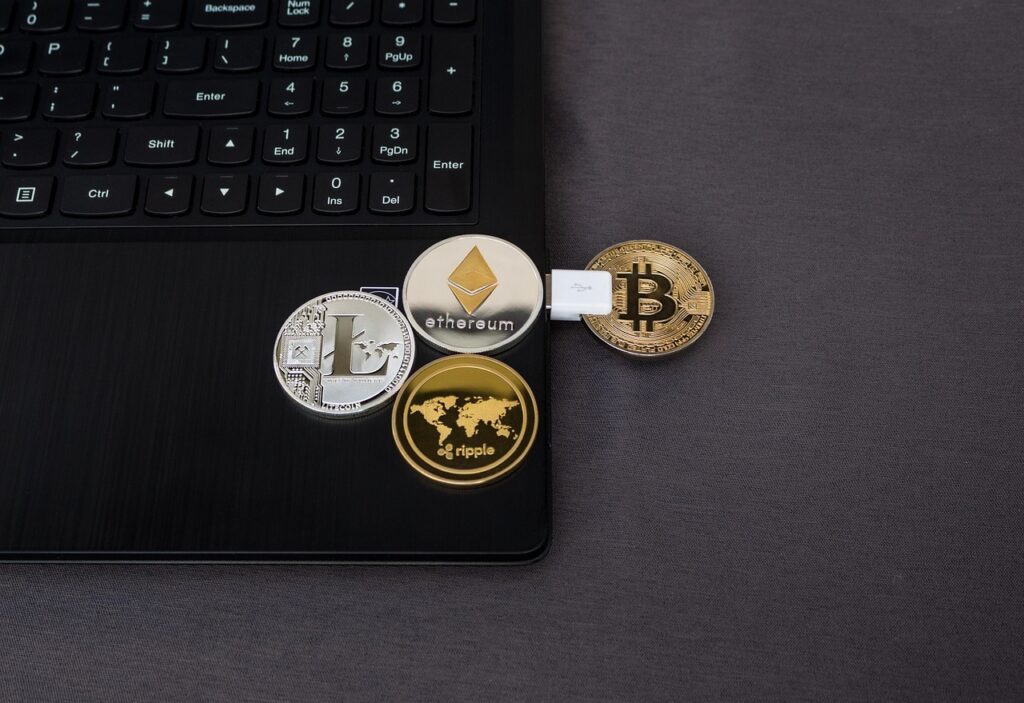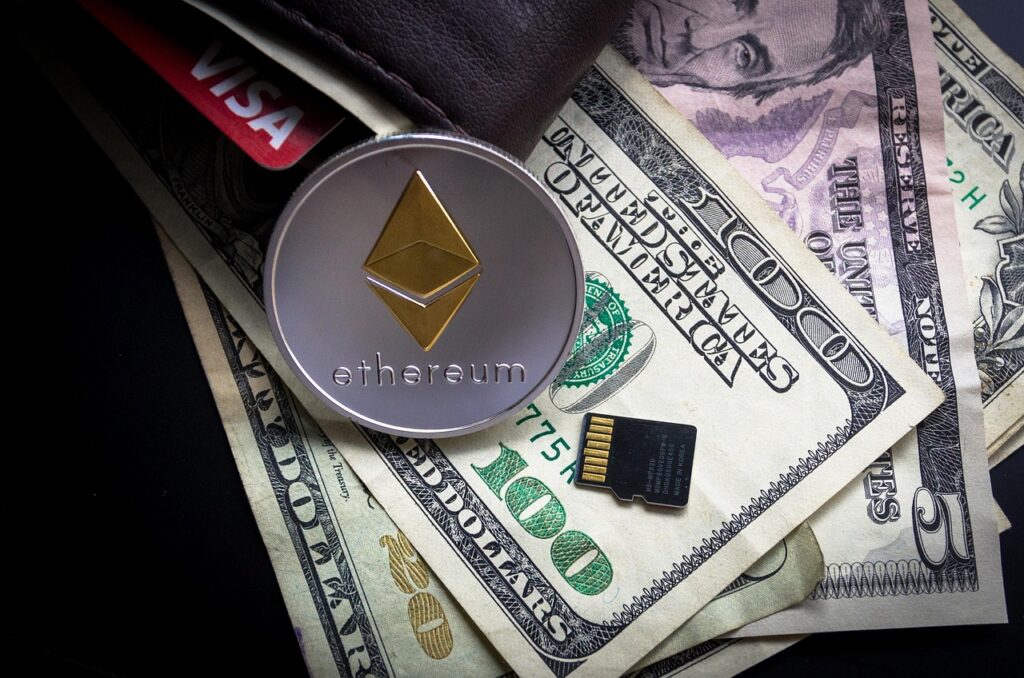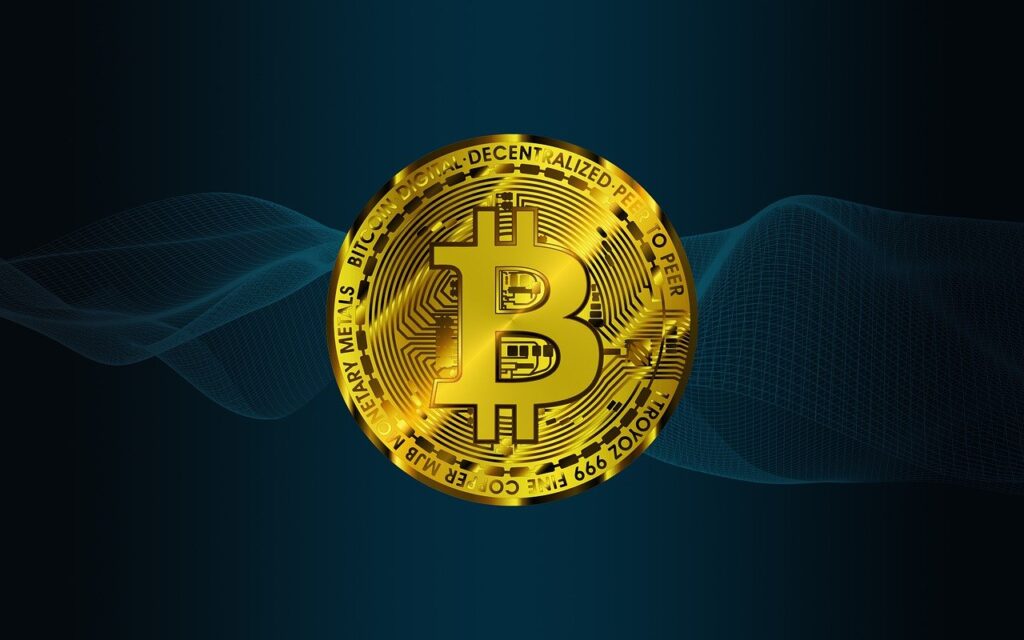So, you’ve probably heard about ‘rug pulls’ in the crypto world. It’s that awful feeling when you invest in a new digital currency or NFT project, thinking it’s the next big thing, only for the creators to suddenly disappear with all the money, leaving you with worthless tokens. It’s like someone pulled the rug out from under your feet. These scams have become increasingly common, especially with the growing hype around cryptocurrency. But it makes you wonder: Are rug pulls illegal in crypto? What does the law say about these kinds of scams here in the U.S.? Let’s break it down.
Table of Contents
- 1 What Is a Crypto Rug Pull? Understanding the Basics
- 2 Types of Rug Pulls: Hard vs. Soft Scams
- 3 Hard Rug Pulls
- 4 Soft Rug Pulls
- 5 Are Rug Pulls Illegal Under U.S. Law?
- 6 Key U.S. Laws Addressing Crypto Fraud
- 7 Regulatory Bodies: SEC, CFTC, and DOJ Roles
- 8 The Securities and Exchange Commission (SEC)
- 9 The Commodity Futures Trading Commission (CFTC)
- 10 The Department of Justice (DOJ)
- 11 Recent Legal Actions Against Rug Pull Perpetrators
- 12 State-Level Legislation on Crypto Scams
- 13 Challenges in Prosecuting Rug Pull Cases
- 14 Tax Implications for Rug Pull Victims
- 15 How to Identify and Avoid Rug Pull Scams
- 16 Conduct Thorough Research
- 17 Analyze Liquidity Pools
- 18 Examine Tokenomics
- 19 Watch Out for Red Flags
- 20 Use Blockchain Explorers
- 21 Stay Informed and Engaged
- 22 The Role of Influencers in Promoting Scam Tokens
- 23 Global Efforts to Combat Cryptocurrency Scams
- 24 International Task Forces and Collaborations
- 25 Regulatory Harmonization
- 26 Public Awareness Campaigns
- 27 Information Sharing and Blacklists
- 28 The Future of Crypto Regulation and Investor Protection
- 29 Frequently Asked Questions
- 30 What exactly is a crypto rug pull?
- 31 Are crypto rug pulls against the law in the U.S.?
- 32 Can rug pulls happen with NFTs (Non-Fungible Tokens)?
- 33 If I’m a victim of a rug pull, can I get my money back?
- 34 How can I spot a rug pull before it happens?
- 35 What’s the difference between a ‘hard’ and ‘soft’ rug pull?
- 36 Which government groups in the U.S. deal with crypto scams?
- 37 Why is it so hard to bring rug pull scammers to justice?
What Is a Crypto Rug Pull? Understanding the Basics
Okay, so you’re hearing about “rug pulls” in the crypto world and wondering what the heck they are? It’s a scam where the team behind a crypto project suddenly disappears, taking all the investors’ money with them. Imagine someone yanking a rug out from under your feet – that’s the idea. A rug pull is a malicious maneuver where crypto developers abandon a project, absconding with investor funds after creating hype and inflated value.
It’s important to understand this stuff because these scams are becoming way too common, especially in the world of decentralized finance (DeFi). You see new tokens popping up all the time, and not all of them are legit. Some are just waiting for the right moment to pull the rug.
Here’s a bit more to chew on:
- Rug pulls often happen with new and obscure cryptocurrencies.
- The developers might create a lot of hype to get people to invest.
- Once they have enough money, they cash out and vanish.
It’s like building a house of cards. The developers create this elaborate structure, get everyone excited about it, and then, poof, they knock it all down and run away with the loot. Leaving everyone else holding the bag.
It’s the wild west out there, so you need to be careful. Always do your research and don’t invest more than you can afford to lose. Keep an eye out for cryptocurrency scams.
Types of Rug Pulls: Hard vs. Soft Scams
Okay, so you’re trying to wrap your head around rug pulls? It’s not just one type of scam. There are generally two main categories: hard rug pulls and soft rug pulls. Think of it like this: one’s a sudden smash-and-grab, and the other is a slow, sneaky fade-out. Both leave you holding the bag, though.
Hard Rug Pulls
A hard rug pull is when the project team just straight-up vanishes. They drain the liquidity pool, dump their tokens, and shut down everything – website, social media, the whole shebang. It’s like they never existed. Investors are left with tokens that are suddenly worthless, and there’s usually no way to recover anything. It’s brutal and fast. Imagine investing in a project and then, overnight, poof, it’s gone. That’s a hard rug pull. These are often associated with cryptocurrency scams that promise the moon but deliver nothing but heartache.
Soft Rug Pulls
Soft rug pulls are a bit more subtle, and honestly, sometimes harder to spot early on. Instead of an abrupt exit, the team gradually reduces its involvement. They might slow down on updates, communicate less with the community, and start selling off their tokens over time. It’s a slow bleed rather than a sudden hemorrhage. While there might be warning signs, it can be tough to tell if it’s just a struggling project or a deliberate scam. The result is the same: investors lose money as the value of the token plummets. Spotting these early can save you from significant losses. It’s like watching a slow-motion train wreck.
The key difference is the speed and obviousness of the exit. Hard rug pulls are instant and obvious, while soft rug pulls are gradual and more deceptive. Both are bad news for investors, but recognizing the signs of a soft rug pull might give you a chance to get out before it’s too late.
Are Rug Pulls Illegal Under U.S. Law?
So, are crypto rug pulls illegal in the US? That’s a tricky question. There aren’t specific laws called “rug pull laws” on the books right now. However, that doesn’t mean perpetrators get away scot-free. Existing laws can often be applied to these situations, depending on the specifics of the scam.
Think of it like this: if someone robs a bank using a toy gun, they still get charged with robbery, even though it wasn’t a real weapon. The intent and the outcome matter. Similarly, even without a “rug pull law,” prosecutors can use other laws to go after the bad actors.
It’s important to remember that just because something is new (like crypto) doesn’t mean old rules don’t apply. Fraud is fraud, no matter what technology is involved.
It comes down to how the rug pull was executed and what kind of promises were made to investors. Did the creators lie about the project’s purpose? Did they misrepresent the technology? Did they fail to disclose important information? These are the kinds of things that can lead to legal trouble.
Key U.S. Laws Addressing Crypto Fraud
So, are rug pulls illegal? Well, it isn’t very easy. There aren’t specific “rug pull laws” on the books yet, but that doesn’t mean these scammers are getting away scot-free. Several existing U.S. laws can be, and are, used to prosecute these kinds of schemes. It’s all about how the rug pull is structured and what kind of deception is involved.
Many rug pulls violate existing financial laws, even if there isn’t a specific “crypto rug pull” law.
Think of it like this: if someone steals your car, they’re not just breaking a “car theft” law; they’re also violating laws against theft, fraud, and potentially other crimes depending on how they did it. Crypto rug pulls are similar; they often involve multiple illegal activities that fall under existing legislation.
Here are some key laws that can come into play:
- Securities Laws: If the cryptocurrency involved is considered a security (like a stock), then the scammers could be in trouble with the Securities and Exchange Commission (SEC) for violating securities laws. This includes things like selling unregistered securities or making false claims to investors. The definition of what constitutes a security is a hot topic in the crypto world, and the SEC has been actively pursuing cases based on this.
- Wire Fraud and Mail Fraud: These are classic fraud laws that come into play when scammers use the internet or mail to carry out their schemes. If they’re making false promises or misrepresentations to get people to invest, they could be charged with wire or mail fraud. It’s a pretty broad law, but it’s effective.
- Commodities Exchange Act (CEA): The Commodity Futures Trading Commission (CFTC) oversees commodity markets, and if a cryptocurrency is considered a commodity, then the CFTC can take action against fraudulent schemes involving it. This is another area where the definition of what counts as a commodity is being actively debated.
- Anti-Money Laundering (AML) Laws: If the scammers are trying to hide the money they stole through the rug pull, they could be charged with money laundering. AML laws are designed to prevent criminals from using the financial system to clean their ill-gotten gains. This is where AML regulations come into play.
It’s important to remember that proving these cases can be challenging. Prosecutors need to show that the scammers intentionally deceived investors and that there was a clear connection between their actions and the losses suffered by the victims. This often requires tracing the flow of funds through complex blockchain transactions and gathering evidence from multiple sources.
- Consumer Protection Laws: These laws protect consumers from unfair or deceptive business practices. If a rug pull involves false advertising or misleading information, the scammers could violate consumer protection laws. State attorneys general often play a role in enforcing these laws.
It’s a bit of a legal patchwork, but these laws provide a framework for going after rug pull perpetrators. As crypto becomes more mainstream, we might see more specific legislation targeting these scams directly, but for now, prosecutors are using the tools they have available.
Regulatory Bodies: SEC, CFTC, and DOJ Roles
Okay, so when it comes to crypto and potential scams like rug pulls, there are a few big players in the U.S. that you should know about. It’s not always super clear-cut who does what, but here’s a breakdown.
The Securities and Exchange Commission (SEC)
The SEC is usually the first agency people think of when it comes to financial regulation. They’re primarily concerned with securities, and whether or not a crypto asset qualifies as a security is a big deal. If a crypto is deemed a security, then the SEC has a lot more power to regulate it. They can investigate projects, bring enforcement actions, and generally try to protect investors from fraud related to securities offerings. Think of them as the main cop on the beat for investment-related scams.
The Commodity Futures Trading Commission (CFTC)
The CFTC regulates commodity markets, and this can include certain crypto assets, especially derivatives like futures contracts. If a crypto is considered a commodity, the CFTC has jurisdiction. They’re focused on preventing market manipulation and ensuring fair trading practices. So, if a rug pull involves manipulating the price of a crypto commodity, the CFTC might get involved. They’re like the SEC’s cousin who handles the commodities side of things.
The Department of Justice (DOJ)
The DOJ is the big guns. They’re the ones who can bring criminal charges against people who commit fraud, including rug pulls. They don’t focus on just one type of asset; if a crime has been committed, they can investigate and prosecute. This could involve wire fraud, securities fraud, or a whole host of other charges. The DOJ is who you don’t want knocking on your door. They can also work with other agencies like the SEC and CFTC to build a case. The US has a fragmented approach to crypto regulation, and the DOJ is there to enforce the laws.
It’s worth noting that these agencies often work together. Crypto is still a relatively new area, and the lines between securities, commodities, and other types of assets can be blurry. So, you might see the SEC and CFTC coordinating on an investigation, or the DOJ bringing charges based on evidence gathered by one of the other agencies.
Recent Legal Actions Against Rug Pull Perpetrators
It’s easy to think that because crypto is new, there aren’t ways to punish those who run off with investor money. But that’s changing. Authorities are starting to crack down on rug pulls, using existing laws to prosecute offenders. While there aren’t specific “rug pull laws” yet, prosecutors are finding ways to hold scammers accountable.
One of the earliest cases involved Ethan Nguyen and Andre Llacuna, who were hit with wire fraud charges and money laundering related to the Frosties NFT rug pull. This case was a big deal because it showed the U.S. government was willing to go after people for this type of scam. It sent a message that even in the Wild West of crypto, there are consequences for stealing from investors.
It’s important to remember that just because something is new doesn’t mean old rules don’t apply. Fraud is fraud, no matter what form it takes. And authorities are getting better at tracing and prosecuting these crimes in the crypto space.
Here’s what often happens after a rug pull:
- Investigations Begin: Law enforcement agencies, like the FBI and SEC, start looking into the project and its creators.
- Asset Freezing: Authorities try to freeze any assets linked to the scammers to prevent them from disappearing completely.
- Criminal Charges: Perpetrators can face charges like wire fraud, securities fraud, and money laundering.
It’s a slow process, but these legal actions are a step in the right direction for crypto regulation.
State-Level Legislation on Crypto Scams
While federal laws are important, individual states are also stepping up to address crypto scams, including rug pulls. It’s a bit of a patchwork situation right now, with some states being more proactive than others. The main goal is to give state attorneys general more tools to go after scammers and protect residents.
State laws can sometimes move faster than federal legislation, allowing for quicker responses to emerging threats in the crypto space. This is especially important given how rapidly these scams evolve.
Some states are focusing on amending existing consumer protection laws to specifically include crypto assets. Others are considering new legislation tailored to the unique aspects of crypto fraud. This includes defining what constitutes a crypto scam and setting penalties for those who perpetrate them.
Here’s a quick look at what some states are doing:
- New York: As mentioned earlier, New York has considered legislation to specifically target rug pulls, though it hasn’t passed yet.
- California: California has been active in pursuing crypto-related fraud cases under existing laws, focusing on consumer protection.
- Texas: Texas has a history of taking action against fraudulent crypto schemes, often involving securities violations.
It’s worth keeping an eye on state-level developments, as they can significantly impact the crypto landscape and investor protection.
Challenges in Prosecuting Rug Pull Cases
So, you’ve been rug-pulled. It stinks, right? But getting justice? That’s a whole other level of complicated. While it feels like these scammers should be locked up immediately, the legal system isn’t exactly set up to handle crypto shenanigans with ease. Here’s why:
- Lack of Specific Laws: This is a big one. There aren’t many laws specifically targeting rug pulls. Prosecutors often have to rely on older laws, like those against wire fraud or securities fraud, and try to make them fit the crypto context. It’s like trying to fit a square peg in a round hole.
- Decentralization and Anonymity: Crypto’s whole thing is being decentralized, and a lot of people use it to stay anonymous. That makes it super hard to track down the people behind the scams. They can be anywhere in the world, using fake identities, and moving funds through multiple wallets to cover their tracks. It’s a detective’s nightmare.
- Cross-Border Issues: Even if you do find out who did it, they might be in another country. Then you have to deal with international law, extradition treaties, and different legal systems. It can take years, and there’s no guarantee you’ll ever get them back to the US to face charges.
Proving intent is another hurdle. The prosecution needs to show that the developers intended to defraud investors from the start. This can be difficult, especially if the developers claim the project failed due to unforeseen circumstances or market conditions. It’s their word against yours, and they have a team of lawyers.
- Complexity of Technology: Judges and juries often don’t understand how crypto or blockchain works. Explaining the technical details of a rug pull in a way that they can understand is a challenge in itself. You need expert witnesses, and even then, it’s easy for things to get lost in translation.
- Evolving Regulations: The rules around crypto are still changing. What’s legal today might be illegal tomorrow, and vice versa. This makes it hard to build a solid case because the legal landscape is constantly shifting.
Basically, prosecuting rug pulls is like trying to catch smoke with your bare hands. It’s possible, but it’s going to be a long, hard fight.
Tax Implications for Rug Pull Victims
Dealing with a rug pull is bad enough, but the tax implications can add another layer of frustration. It’s not always clear how the IRS views these losses, and the rules can be complex. Let’s break down some key considerations.
It’s important to document everything related to the rug pull, including transaction records, communications, and any information about the project. This documentation will be crucial when you file your taxes and attempt to claim any losses.
The IRS hasn’t provided specific guidance on rug pulls, so the general rules for investment losses typically apply. However, the unique nature of crypto and the often fraudulent circumstances of rug pulls can make things complicated.
- Keep detailed records of all transactions.
- Consult with a tax professional who understands crypto.
- Be prepared to explain the situation clearly to the IRS if needed.
One area of confusion is whether a rug pull qualifies as a theft loss. Generally, a theft loss requires proving criminal intent. Showing that the developers intentionally defrauded investors can be difficult, but it’s worth exploring. If you can prove theft, you might be able to deduct the loss differently than a standard investment loss. Unfortunately, claiming a casualty or theft loss on your taxes is unlikely.
Another factor is whether you received any tokens or other assets in exchange for your investment. If you did, you might need to determine their fair market value at the time you received them, even if they later became worthless. This can affect how you calculate your loss.
It’s also worth noting that if you recovered any funds from the rug pull, that recovery could be taxable income. For example, if you participated in a class-action lawsuit and received a settlement, that settlement might be considered taxable income.
How to Identify and Avoid Rug Pull Scams
Okay, so you’re trying not to get rugged, right? It’s tough out there, but there are things you can do to protect yourself. It’s all about doing your homework and being skeptical. Seriously, if something sounds too good to be true, it probably is.
Conduct Thorough Research
Before you even think about throwing money at a new crypto project, dig deep. I mean, really deep. Don’t just read the whitepaper; understand it. Who are the developers? Are they public, or are they hiding behind pseudonyms? A team that’s willing to put their names and reputations on the line is usually a good sign. Look for projects with transparent and verifiable information about their team, technology, and roadmap.
Analyze Liquidity Pools
Liquidity is what keeps a token tradable. If a project’s liquidity pool is small or controlled by only a few people, that’s a major red flag. A rug pull becomes way easier when the developers can just yank all the liquidity out. Check the liquidity pool size and distribution. Are there measures in place to prevent the developers from draining the pool?
Examine Tokenomics
Tokenomics is just a fancy word for how a token is designed to work. How many tokens are there? How are they distributed? Are there any mechanisms in place to prevent massive dumps by the developers? If a large percentage of the tokens are held by a small group, they could crash the price at any time. Look for projects with fair token distribution and built-in safeguards against manipulation.
Watch Out for Red Flags
There are some common warning signs that scream “rug pull.” Be wary of projects that:
- Promise ridiculously high returns with no clear explanation of how they’ll achieve them.
- Have a whitepaper that’s full of buzzwords but light on actual substance.
- Rely heavily on hype and influencer marketing, but lack a solid product or technology.
- Have a team that’s unresponsive to questions or concerns from the community.
- Undergo sudden, unexplained changes to their roadmap or tokenomics.
It’s easy to get caught up in the excitement of a new project, but don’t let FOMO cloud your judgment. Take your time, do your research, and only invest what you can afford to lose. Remember, in the world of crypto, caution is your best friend.
Use Blockchain Explorers
Blockchain explorers are your friends. Use them to track transactions, analyze token distribution, and see where the money is flowing. If you see suspicious activity, like large amounts of tokens being moved to a single address, that’s a reason to be concerned. Some good ones are Etherscan and Blockchair. They let you see what’s really going on behind the scenes.
Stay Informed and Engaged
Join the project’s community channels (Telegram, Discord, etc.), but don’t just blindly believe everything you read. Ask questions, voice your concerns, and see how the team responds. A legitimate project will be transparent and responsive, while a scam project will often try to silence dissent or ban anyone who asks tough questions.
The Role of Influencers in Promoting Scam Tokens
It’s hard to miss the impact influencers have on crypto. They can really boost a project, but that power can also be used to promote scams. Sometimes, it’s intentional, and sometimes, influencers just don’t do their homework. Either way, it can lead to people losing money.
Influencers often get paid to promote new tokens, and this creates a conflict of interest. They might hype up a coin without really understanding it, or even worse, knowing it’s a scam. It’s a big problem because many people, especially those new to crypto, trust these influencers.
It’s important to remember that influencers are not financial advisors. Their opinions should be taken with a grain of salt, and you should always do your own research before investing in any crypto project.
Here’s a breakdown of some things to keep in mind:
- Due Diligence is Key: Don’t just jump into a project because an influencer said so. Look into the team, the tech, and the tokenomics. See if it makes sense.
- Question Everything: If an influencer is promising crazy returns, be very skeptical. Crypto is volatile, and guaranteed profits are a major red flag.
- Look for Transparency: Is the team behind the project open and communicative? Are the smart contracts audited? These are good signs.
It’s not all doom and gloom. Some influencers do try to provide honest reviews and analysis. But it’s up to each individual to be responsible and not blindly follow the hype. Remember the FTX Cryptocurrency Exchange Collapse and how many influencers were involved?
Global Efforts to Combat Cryptocurrency Scams
Cryptocurrency scams are a global problem, and it’s not just the US dealing with them. Because crypto is borderless, these scams often involve people and money moving across many countries. This makes it hard for any single country to tackle the issue alone. International cooperation is really important for catching the bad guys and protecting investors.
International Task Forces and Collaborations
Several international groups are working together to fight crypto crime. These include organizations like:
- Interpol: They coordinate police efforts across countries.
- Europol: The European Union’s law enforcement agency.
- Financial Action Task Force (FATF): This group sets standards for fighting money laundering and terrorist financing, which often go hand-in-hand with crypto scams.
These groups share information, conduct joint investigations, and try to harmonize regulations to make it harder for scammers to operate.
Regulatory Harmonization
One of the big challenges is that different countries have different rules about crypto. Some are very strict, while others are more relaxed. This makes it easy for scammers to move to countries with weaker regulations. There’s a push to get countries to agree on common standards for things like:
- Licensing crypto exchanges
- Requiring crypto companies to know their customers (KYC)
- Monitoring crypto transactions for suspicious activity
Getting everyone on the same page is tough, but it’s essential for stopping scammers from exploiting loopholes.
Public Awareness Campaigns
Many countries are running campaigns to educate people about crypto scams. These campaigns try to teach people how to spot scams and what to do if they’ve been victimized. They often use social media, websites, and public service announcements to reach a wide audience. The goal is to make people more aware of the risks and less likely to fall for scams.
Information Sharing and Blacklists
Sharing information about known scammers and suspicious crypto addresses is another important tactic. Some organizations maintain blacklists of addresses associated with scams. This helps exchanges and other crypto platforms block transactions to and from these addresses. It’s like a neighborhood watch, but for crypto.
The Future of Crypto Regulation and Investor Protection
The crypto world is changing fast, and so are the rules around it. It feels like every other week, there’s a new development, whether it’s a new type of scam or a new piece of legislation being proposed. Keeping up can be a real challenge, but it’s important to understand where things might be headed, especially when it comes to keeping investors safe.
One thing is for sure: regulation is coming, and it’s going to shape the future of crypto. The question is, what will that regulation look like, and how effective will it be?
It’s easy to feel overwhelmed by the constant changes in the crypto space. But staying informed and understanding the potential risks and rewards is key to making smart decisions.
Here’s a look at some key areas to watch:
- Increased Regulatory Scrutiny: Expect more government agencies to get involved in overseeing crypto. This means more rules, more reporting requirements, and potentially more enforcement actions against those who break the law. The Digital Asset Market Clarity Act of 2025 is one example of this trend.
- Focus on Investor Education: Regulators are starting to realize that education is just as important as enforcement. Look for more resources and programs aimed at helping investors understand the risks of crypto and how to avoid scams.
- Development of Clearer Legal Frameworks: Right now, the legal status of many cryptocurrencies and crypto-related activities is unclear. Over time, expect to see clearer laws and regulations that define what’s legal and what’s not. This will help to reduce uncertainty and provide a more level playing field for everyone.
Ultimately, the goal is to create a crypto market that’s both innovative and safe. It’s a tough balance to strike, but it’s essential for the long-term success of the industry. And for investors, staying informed and being cautious is more important than ever. It’s the wild west out there, but hopefully, things will start to settle down as the rules of the game become clearer. One way to stay informed is to understand crypto taxes.
Frequently Asked Questions
What exactly is a crypto rug pull?
A crypto rug pull is a scam where the people who create a new digital currency project suddenly disappear with all the money invested by others, leaving the investors with worthless digital tokens.
Are crypto rug pulls against the law in the U.S.?
While there aren’t specific laws just for crypto rug pulls yet, these scams often break existing financial rules, like those against fraud or money laundering. So, even without a ‘rug pull law,’ the people behind them can still get into trouble with the law.
Can rug pulls happen with NFTs (Non-Fungible Tokens)?
Yes, rug pulls can happen with NFTs, too. Scammers might create fake NFT projects or platforms, promise unique digital art, and then vanish with the money, leaving buyers with nothing valuable.
If I’m a victim of a rug pull, can I get my money back?
It’s tough to get your money back because crypto transactions are usually final. However, you should report the scam to the FBI’s Internet Crime Complaint Center and check blockchain records to see where the money went. You can also join online groups to see if other victims are planning legal action.
How can I spot a rug pull before it happens?
Look out for projects with unknown creators, bad grammar on their websites, promises of huge, unrealistic profits, or if a small group of people owns most of the digital currency. Also, be wary if it’s hard to sell your tokens or if celebrities are promoting it, as their accounts might have been hacked.
What’s the difference between a ‘hard’ and ‘soft’ rug pull?
The main difference is how the scam happens. In a ‘hard rug pull,’ the creators use special code to stop people from selling their tokens, making them worthless instantly. In a ‘soft rug pull,’ the creators slowly sell off their own tokens, making the price drop until it’s almost zero.
Which government groups in the U.S. deal with crypto scams?
The SEC (Securities and Exchange Commission), CFTC (Commodity Futures Trading Commission), and DOJ (Department of Justice) all play roles. They investigate and prosecute cases where crypto scams violate laws related to investments, trading, or general financial crimes like fraud.
Why is it so hard to bring rug pull scammers to justice?
It’s hard to catch and punish rug pull scammers because crypto is new and doesn’t have many specific laws yet. Also, many scammers hide who they are, and crypto transactions can cross borders, making it tricky for one country’s laws to apply.














